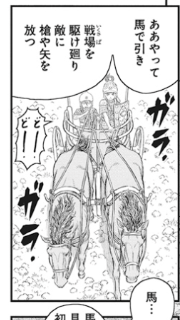Aye, which might be why one person I’ve come across translated it as “Strike that Iron and Fire it Up” to capture that double meaning. I’m not too enthused by that either, though…
It could just be a boring title.
If it doesn’t, someone should tell that to the Evangelion opening…
Even ある has an imperative form, most notably in the translation of “let there be light” 光あれ.
Does putting 見 at the end of any noun produce a proper, un-conjugated term to describe it being looked-at?
ex: Wani says 月見 means “viewing the moon” and 花見 means “viewing sakura blossoms”, so would something like 子犬見 mean “viewing puppy/ies”? Or are the former just specific phrases that it applies to?
No, you can’t. There are set expressions that use 見 as a suffix, but it is “not productive.” That’s the linguistic term for “you can’t just stick it anywhere and make new expressions.”
As an aside, an example of something that is productive would be something like [verb stem]はじめる, where even if a completely new verb came into existence tomorrow, you’d be able to attach はじめる to its stem and make a verb meaning “to start [new verb]ing.”
A productive suffix on nouns would probably be 的, which is like “ish” in English. You can stick “ish” onto most nouns in English and it will sound like something a native might say. And 的 has that kind of usage.
And there are some pretty interesting set expressions. I especially like 雪見酒. It’s interesting the cultural traditions you can learn about via these expressions.
I need help with understanding grammar of the following sentences:
- ああやって 馬で引き
- 戦(いくさ)場(ば)を駆け廻り 敵に槍や矢を放つ
Source: duranki manga chapter 5, page 12.
Context: one old guy explains what chariot does on the battlefield.
My 1st question: why 引き doesn’t have ます?You can’t omit ます by any means. Is there any rule for that?
My 2nd: what is 駆け廻り? If it would have been a modifier for 敵, then the verb had to be in the vocabulary form 駆け廻る. May it be that the verb had ~ながら omitted or something else?
Thanks a lot in advance.

If those were in て form, would you understand it fine? The て form is used for sentence continuation in casual speech, but the stem form can perform the same job in more serious speech or writing.
That’s what I am on about. It had to be in て form to continue the speech and I will be completely fine with that.
Do you have any sources which explain why and how stem form can be used in the same way? I can’t find anything at all.
I don’t have anything off the top of my head, other than like… It’s very common so you’ll get used to it very quickly as you consume content.
It’s called 連用形, so you should be able to find it by googling for that.
In the example sentence for 邪魔, WK lists: 私の邪魔をするな
Why is it 私の? Why not 私に? 邪魔 is a pretty common word so I want to get this down.
I think it’s just how this word is used? Like “Don’t do our hinderance”, with 邪魔 being a noun that する is acting on. If you converted 邪魔 to be a verb directly, like 邪魔するな, then you’d use を on what was being hindered/blocked 「私を邪魔するな」, I think. I don’t think you’d use に in either case, since you are directly hindering something, not hindering towards something.
I was thinking of 私に because I thought of it as “Don’t be a hinderance to (に) me”
Yeah that’s more of an English phrasing thing then. に only works for “to” in some cases, but with 邪魔 the action of hindering is directly happening to the target object, so it uses を. That’s my understanding at least.
Hi fellas, I have a grammar doubt!
So, the sentence is as it goes:
江戸時代の初めに女性は男性の3分の1しかいませんでした。
So I am not getting at all the relationtship between men and women. Does this mean that 1 out of 3 was a woman? Does it mean there were three times more men than there were women? I am so lost (sorry I suck at japanese numbers).
Thank you so so much!
江戸時代の初めに - At the beginning of the Edo period
女性 - women
男性 - (population of) men
の3分の1 - One-third of
しか - (when used before a negative verb) only
いません - (because of しか, this verb is no longer negative!) exists
でした - was/were
“At the start of he Edo period, women were only one-third of (the population) of men.”
I think that’s what’s happening? Women being 1/3rd of all men doesn’t make sense, so I think they’re talking about the population. ![]()
In other words, only 1/3rd of the population back in the Edo period were women, while nowadays it’s more of a 50/50 split. I hope somebody can come along and correct me… ![]()
I read this as „women made up 1/3 of the population of men“, in other words, there were three times as many men as women, in other words, 1/4 were women and 3/4 were men.
